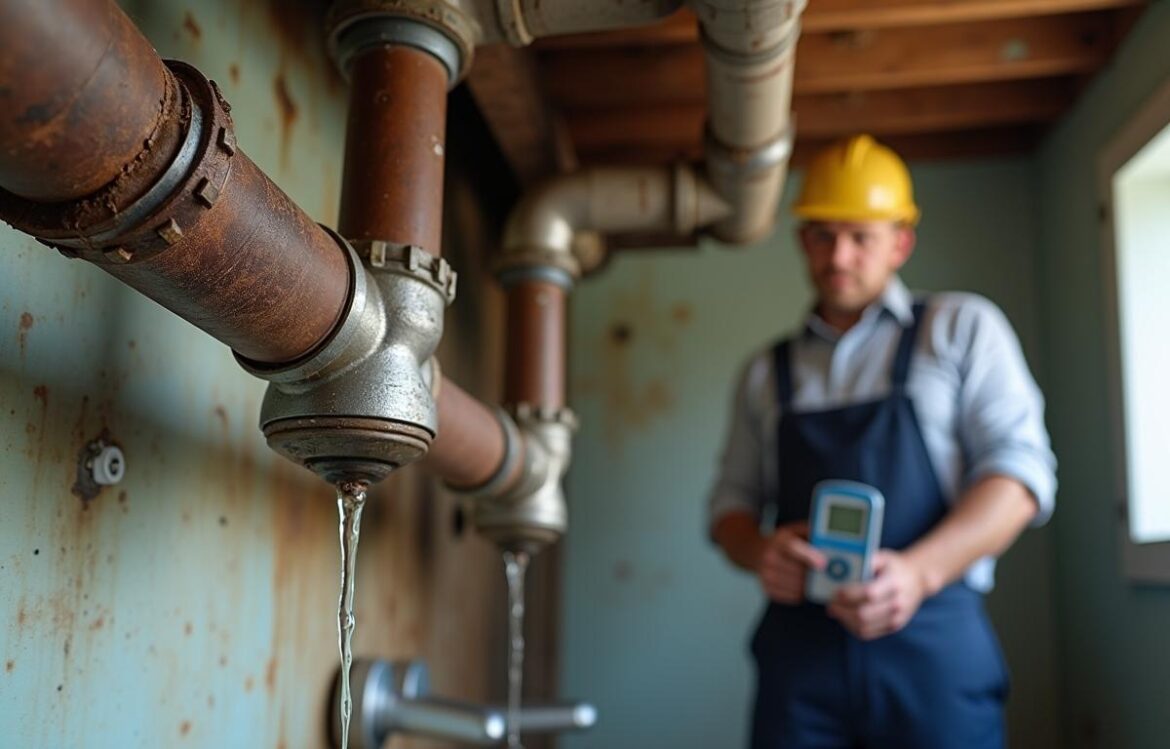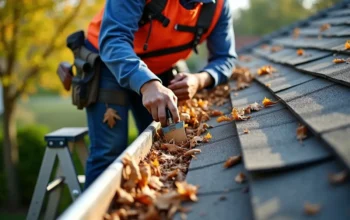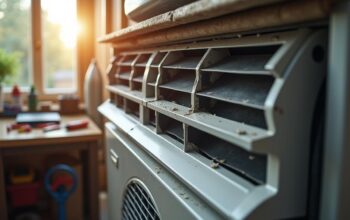
Health hazards can creep into your home in unexpected ways, and your plumbing system is no exception. Many people assume that once water flows out of a tap, it must be safe to drink or use for daily activities. Yet pipes, fixtures, and even local water sources can hide a surprising range of contaminants. These issues, if not addressed, may lead to toxic exposure, lingering health effects, and increased environmental risks. Below, you’ll find insights that can help you spot potential problems, safeguard your home, and reduce the risk of disease prevention challenges.
Contents
Mitigating Environmental Risks in Your Plumbing
Environmental risks often begin with deteriorating pipes or outdated plumbing materials. Corrosion can cause contamination risks from metals like lead, while organic buildup in slow-draining pipes may introduce harmful bacteria. Even small leaks in the system can create breeding grounds for biological threats, eventually affecting public health.
Older constructions commonly have lead-based pipes. Over time, these pipes can break down, leaching toxic particles into the household water supply. This form of chemical hazards can lead to chronic illnesses, particularly in children, who are more susceptible to heavy-metal poisoning. Water contamination doesn’t always cause immediate discomfort, meaning a hidden leak or corroded pipe can slowly escalate health hazards without anyone noticing.
Telltale Signs of Emerging Problems
Unusual odors or a metallic taste in your water can be early indicators of contamination. Stains in sinks and bathtubs—often red, brown, or green—may hint at rust or other impurities. Frequent clogs can also encourage bacterial growth and possibly higher risks of infectious diseases. These issues are not just plumbing inconveniences; they may turn into severe health threats if ignored.
How Air Quality Plays a Role
Plumbing problems can impact indoor air quality too. Constant dampness from leaks can promote mold and mildew, especially in hidden areas behind walls. Exposure to mold spores can aggravate respiratory conditions and complicate disease prevention near the home. Maintaining good air circulation and staying alert for moisture problems can help you keep these concerns at bay.
Reducing Chemical Hazards and Biological Threats
Chemical hazards and biological agents frequently overlap in plumbing systems. Disinfectants like chlorine must be balanced carefully to prevent harmful chemical reactions. On the other hand, insufficient disinfectant can encourage bacteria and viruses to thrive. Striking the right levels in water treatment requires attention to local water quality reports and ongoing hazard assessment.
Common Contaminants in Households
• Heavy metals: Lead, copper, and iron are among the most prevalent.
• Bacterial growth: E. coli, Legionella, and other infectious diseases can spread through contaminated pipes.
• Volatile organic compounds: Industrial waste or nearby agricultural runoff can seep into groundwater, posing additional risks.
Ignoring these contaminants increases the possibility of workplace hazards for plumbing professionals entering homes. It also raises concerns about occupational safety if repairs involve hazardous materials without proper safety protocols and health and safety regulations in place.
Effects on Overall Public Health
Contaminated water isn’t a problem contained to individual households. Widespread issues can escalate into broader public health emergencies if multiple homes in a community share a compromised water source. Once environmental risks spread, local officials often step in with emergency response measures to address contamination. Still, prevention is typically the more cost-effective and safer approach.
Keeping an Eye on Water Contamination
Water contamination can linger in older plumbing systems, particularly in areas prone to flooding or industrial pollution. Heavy rainfall might overwhelm local water treatment facilities, making it easier for contaminants to infiltrate municipal lines. Keeping a close watch on water quality reports is one of the first steps in risk management.
Quiet Contributors to Toxic Exposure
It’s not always the large-scale disasters that cause the most harm. Sometimes minor leaks, unnoticed for months, create a stagnant environment ripe for bacterial growth. Once pipes become a breeding ground for these pathogens, you face a bigger problem than just a high water bill. Airborne particles from damp areas may trigger respiratory issues or allergic reactions. Over time, neglected leaks can contribute to ergonomic risks in the home, as people contort themselves to fix repeated issues under sinks and around tight corners.
The Noise Pollution Factor
Why mention noise pollution in a discussion about plumbing? While it seems unrelated at first, rattling pipes or constantly running water can add stress to your environment. Persistent noise is less of a direct health hazard than contaminated water, but it can disrupt your daily life and indicate bigger problems. Unusual sounds may mean high water pressure in the lines, which can hasten pipe damage and increase the chances of sudden bursts leading to extensive flooding and contamination.
Practical Steps for Disease Prevention at Home
Disease prevention often starts with clean water. Simple measures like installing high-quality filters can lessen immediate threats from chemical hazards. More extensive solutions may involve replacing outdated plumbing infrastructure. It’s crucial to consult with professionals who follow industrial safety guidelines and ensure that repairs meet local safety regulations.
Regular Water Testing as a Proactive Move
Scheduling periodic water tests provides valuable insights into the state of your plumbing. Professional tests can uncover bacteria levels, heavy metals, and pH imbalances that may otherwise remain hidden. Frequent testing aligns with preventive healthcare principles, especially if your household includes vulnerable individuals like children or those with compromised immune systems.
Disinfecting and Flushing Systems
Flushing your faucets and showerheads after a period of disuse can remove stagnant water that contains bacteria. Some homeowners also opt for professional disinfecting services, especially if they notice an increase in unusual odors or taste. Acting quickly prevents small-scale hazards from becoming bigger concerns, reflecting a sensible approach to hazard assessment.
The Value of Regular Hazard Assessment
Hazard assessment doesn’t need to be limited to chemical testing. A thorough inspection of your plumbing system can identify physical hazards, such as corroded pipes, improper seals, or unsafe installation methods. Addressing these issues promptly can prevent minor leaks from escalating and reduce the likelihood of contamination risks.
Risk Management Essentials
Persistent plumbing problems demand a structured approach to risk management, especially when you factor in possible radiation exposure in some regions with naturally occurring radioactive materials in groundwater. While this issue is relatively rare, ignoring local conditions can pose substantial health risks over time. Keeping updated with local water reports, scheduling timely inspections, and aligning with established safety regulations will help you stay ahead of potential dangers.
When to Consider a Professional
Homeowners can do plenty of preventive measures on their own, but some situations call for professional intervention. Complex plumbing systems might hide chronic leaks or structural issues that require advanced tools to detect. Certified plumbers, who are typically well-versed in workplace safety, can locate concealed damages with minimal disruption. A professional approach often saves you time, money, and prolonged exposure to harmful elements.
Practical Strategies to Protect Against Workplace Hazards and More
Plumbers, contractors, and other professionals who handle pipes regularly must also consider occupational safety. Using proper protective gear, adhering to safety protocols, and minimizing water contact in potentially hazardous scenarios helps prevent accidents. If your home is undergoing extensive renovations, coordinate efforts among different contractors to ensure no aspect of your plumbing introduces new risks.
The Bigger Picture of Epidemiological Studies
Though it may seem like an overreach to link your home’s plumbing to large-scale epidemiological studies, the connection exists. Data shows that waterborne bacteria and contaminants contribute to a significant share of infectious diseases. Identifying sources of contamination early can help communities understand broader trends and refine disease prevention strategies. Even a small change in your home can add helpful data to local health departments working on bigger solutions.
Keeping an Emergency Response Plan Ready
Plumbing emergencies can escalate quickly, especially if a burst pipe or backflow contaminates your living space. Having an emergency response plan in place offers peace of mind. This plan should include steps to shut off the main water supply, contact information for local health officials, and the number of a reliable plumber. Early intervention reduces the extent of water damage and curbs the spread of bacteria or other harmful substances.
Maintaining a well-functioning plumbing system is not just a matter of convenience; it’s about safeguarding your household from a range of potential health effects. Pipes, fixtures, and water sources can harbor dangerous contaminants if neglected. By staying vigilant and taking proactive steps, you can significantly reduce the chance of encountering serious problems, whether they involve chemical hazards, biological threats, or physical hazards that compromise your peace of mind.



